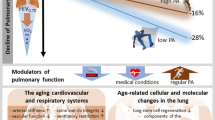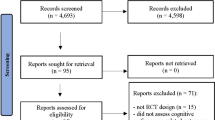Abstract
Exercise increases the levels of neurogenic factors and enhances neurogenesis, memory, and learning. However, the molecular link between exercise and neurogenesis is not clear. The purpose of this study was to examine the effects of exercise intensity on cognitive function and protein expression in the hippocampus of old mice. To compare the effects of aerobic exercise intensity on cognition in old mice, we exposed 18-month-old mice to low- and moderate-intensity treadmill exercise for 4 weeks. Moderate-intensity exercise improved cognitive function in the old mice, while low-intensity exercise did not. To investigate the underlying mechanisms, two-dimensional electrophoresis was used to examine protein expression. Using peptide fingerprinting mass spectrometry, we identified 19 proteins that were upregulated in the hippocampus following exercise training, and seven of these proteins were normalized by the control value. Among them, the levels of 14-3-3 zeta and heat shock protein 70, which have been shown to be induced by exercise training and related to neurogenesis, were dramatically increased by moderate exercise. Hippocalcin, α-spectrin, ovarian tumor domain-containing ubiquitin aldehyde-binding protein 1 (otub1), mu-crystallin, serine racemase, and rho GDP dissociation inhibitor 1, which are related to neurogenesis, neuroprotection, and synaptic strength, were upregulated in the hippocampus by moderate exercise. In addition, we confirmed that neurogenic markers, including doublecortin and the neuronal nuclei antigen, and hippocalcin, otub1, and spectrin-α are potential molecular links between hippocampal neurogenesis and exercise in the elderly. Thus, these results showed that steady moderate-intensity exercise delayed the declines in cognitive function in the elderly through the activation of multiple factors.






Similar content being viewed by others
References
Cotman CW, Berchtold NC (2002) Exercise: a behavioral intervention to enhance brain health and plasticity. Trends Neurosci 25(6):295–301
Markham JA, Greenough WT (2004) Experience-driven brain plasticity: beyond the synapse. Neuron Glia Biol 1(4):351–363
Colcombe SJ, Kramer AF, Erickson KI, Scalf P, McAuley E, Cohen NJ, Webb A, Jerome GJ, Marquez DX, Elavsky S (2004) Cardiovascular fitness, cortical plasticity, and aging. Proc Natl Acad Sci U S A 2;101(9):3316–3321.
Boveris A, Navarro A (2008) Systemic and mitochondrial adaptive responses to moderate exercise in rodents. Free Radic Biol Med 15;44(2):224–229.
Kamijo K, Hayashi Y, Sakai T, Yahiro T, Tanaka K, Nishihira Y (2009) Acute effects of aerobic exercise on cognitive function in older adults. J Gerontol B Psychol Sci Soc Sci 64(3):356–363
Baker LD, Frank LL, Foster-Schubert K, Green PS, Wilkinson CW, McTiernan A, Cholerton BA, Plymate SR et al (2010) Aerobic exercise improves cognition for older adults with glucose intolerance, a risk factor for Alzheimer’s disease. J Alzheimers Dis 22(2):569–579
Jang MN, Oh MJ, Jeong IG (2009) The effects of treadmill exercise on BDNF expression and functional recovery after spinal cord contusion in the rats. J Korean Soc Living Environ Sys 16(2):154–161
Cotman CW, Berchtold NC (2002) Exercise: a behavioral intervention to enhance brain health and plasticity. Trends Neurosci 25(6):295–301
Kim H, Lee SH, Kim SS, Yoo JH, Kim CJ (2007) The influence of maternal treadmill running during pregnancy on short-term memory and hippocampal cell survival in rat pups. Int J Dev Neurosci 25(4):243–249
van Praag H, Kempermann G, Gage FH (1999) Running increases cell proliferation and neurogenesis in the adult mouse dentate gyrus. Nat Neurosci 2(3):266–270
Aguiar AS Jr, Castro AA, Moreira EL, Glaser V, Santos AR, Tasca CI, Latini A, Prediger RD (2011) Short bouts of mild-intensity physical exercise improve spatial learning and memory in aging rats: involvement of hippocampal plasticity via AKT, CREB and BDNF signaling. Mech Ageing Dev 132(11–12):560–567
Kohl Z, Kandasamy M, Winner B, Aigner R, Gross C, Couillard-Despres S, Bogdahn U, Aigner L et al (2007) Physical activity fails to rescue hippocampal neurogenesis deficits in the R6/2 mouse model of Huntington’s disease. Brain Res 1155:24–33
Kim YP, Kim HB, Jang MH, Lim BV, Kim YJ, Kim H, Kim SS, Kim EH et al (2003) Magnitude- and time-dependence of the effect of treadmill exercise on cell proliferation in the dentate gyrus of rats. Int J Sports Med 24(2):114–117
Chen WQ, Viidik A, Skalicky M, Höger H, Lubec G (2007) Hippocampal signaling cascades are modulated in voluntary and treadmill exercise rats. Electrophoresis 28(23):4392–4400
Zhou W, Barkow JC, Freed CR (2017) Running wheel exercise reduces α-synuclein aggregation and improves motor and cognitive function in a transgenic mouse model of Parkinson’s disease. PLoS One 12(12):e0190160
Sun D, McGinn M, Hankins JE, Mays KM, Rolfe A, Colello RJ (2013) Aging- and injury-related differential apoptotic response in the dentate gyrus of the hippocampus in rats following brain trauma. Front Aging Neurosci 5:95
Park SY, Yoon SN, Kang MJ, Lee Y, Jung SJ, Han JS (2017) Hippocalcin promotes neuronal differentiation and inhibits astrocytic differentiation in neural stem cells. Stem Cell Reports 8(1):95–111
Gelot A, Moreau J, Khrestchatisky M, Ben Ari Y, Pollard H (1994) Developmental change of alpha-spectrin mRNA in the rat brain. Brain Res Dev Brain Res 81(2):240–246
Xie L, Li A, Shen J, Cao M, Ning X, Yuan D, Ji Y, Wang H et al (2016) OTUB1 attenuates neuronal apoptosis after intracerebral hemorrhage. Mol Cell Biochem 422(1–2):171–180
Ramírez-Rodríguez G, Babu H, Klempin F, Krylyshkina O, Baekelandt V, Gijsbers R, Debyser Z, Overall RW et al (2013) The α crystallin domain of small heat shock protein b8 (Hspb8) acts as survival and differentiation factor in adult hippocampal neurogenesis. J Neurosci 33(13):5785–5796
Carrasco-Garcia E, Arrizabalaga O, Serrano M, Lovell-Badge R, Matheu A (2015) Increased gene dosage of Ink4/Arf and p53 delays age-associated central nervous system functional decline. Aging Cell 14(4):710–714
Wolosker H (2018) The neurobiology of d-serine signaling. Adv Pharmacol 82:325–348
Chen H, Phillips HA, Callen DF, Kim RY, Wistow GJ, Antonarakis SE (1992) Localization of the human gene for mu-crystallin to chromosome 16p. Genomics 14(4):1115–1116
Vié MP, Evrard C, Osty J, Breton-Gilet A, Blanchet P, Pomérance M, Rouget P, Francon J et al (1997) Purification, molecular cloning, and functional expression of the human nicodinamide-adenine dinucleotide phosphate-regulated thyroid hormone-binding protein. Mol Endocrinol 11(11):1728–1736
Francelle L, Galvan L, Gaillard MC, Guillermier M, Houitte D, Bonvento G, Petit F, Jan C et al (2015) Loss of the thyroid hormone-binding protein Crym renders striatal neurons more vulnerable to mutant huntingtin in Huntington’s disease. Hum Mol Genet 24(6):1563–1573
Van Remmen H, Hamilton ML, Richardson A (2003) Oxidative damage to DNA and aging. Exerc Sport Sci Rev 31(3):149–153
Sohal RS, Weindruch R (1996) Oxidative stress, caloric restriction, and aging. Science 273(5271):59–63
Beckman KB, Ames BN (1998) The free radical theory of aging matures. Physiol Rev 78(2):547–581
D'Adamo P, Welzl H, Papadimitriou S, Raffaele di Barletta M, Tiveron C, Tatangelo L, Pozzi L, Chapman PF et al (2002) Deletion of the mental retardation gene Gdi1 impairs associative memory and alters social behavior in mice. Hum Mol Genet 11(21):2567–2580
Herholz K, Buskies W, Rist M, Pawlik G, Hollmann W, Heiss WD (1987) Regional cerebral blood flow in man at rest and during exercise. J Neurol 234(1):9–13
Klintsova AY, Dickson E, Yoshida R, Greenough WT (2004) Altered expression of BDNF and its high-affinity receptor TrkB in response to complex motor learning and moderate exercise. Brain Res 1028(1):92–104
Leak RK, Garbett KA, Dettmer AM, Zhang Z, Mirnics K, Cameron JL (2012) Physical activity is linked to ceruloplasmin in the striatum of intact but not MPTP-treated primates. Cell Tissue Res 350(3):401–407
Voss MW, Erickson KI, Prakash RS, Chaddock L, Kim JS, Alves H, Szabo A, Phillips SM et al (2013) Neurobiological markers of exercise-related brain plasticity in older adults. Brain Behav Immun 28:90–99
Duan W, Zhang YP, Hou Z, Huang C, Zhu H, Zhang CQ, Yin Q (2016) Novel insights into NeuN: from neuronal marker to splicing regulator. Mol Neurobiol 53(3):1637–1647
Kim SE, Ko IG, Kim BK, Shin MS, Cho S, Kim CJ, Kim SH, Baek SS et al (2010) Treadmill exercise prevents aging-induced failure of memory through an increase in neurogenesis and suppression of apoptosis in rat hippocampus. Exp Gerontol 45(5):357–365
van Praag H, Shubert T, Zhao C, Gage FH (2005) Exercise enhances learning and hippocampal neurogenesis in aged mice. J Neurosci 25(38):8680–8685
Berchtold NC, Chinn G, Chou M, Kesslak JP, Cotman CW (2005) Exercise primes a molecular memory for brain-derived neurotrophic factor protein induction in the rat hippocampus. Neuroscience 133(3):853–861
Rojas Vega S, Strüder HK, Vera Wahrmann B, Schmidt A, Bloch W, Hollmann W (2006) Acute BDNF and cortisol response to low intensity exercise and following ramp incremental exercise to exhaustion in humans. Brain Res 1121(1):59–65
Schmidt-Kassow M, Schädle S, Otterbein S, Thiel C, Doehring A, Lötsch J, Kaiser J (2012) Kinetics of serum brain-derived neurotrophic factor following low-intensity versus high-intensity exercise in men and women. Neuroreport 23(15):889–893
Ogoh S, Ainslie PN (2009) Cerebral blood flow during exercise: mechanisms of regulation. J Appl Physiol 107(5):1370–1380
Sato K, Ogoh S, Hirasawa A, Oue A, Sadamoto T (2011) The distribution of blood flow in the carotid and vertebral arteries during dynamic exercise in humans. J Physiol 1 589(Pt 11):2847–2856
Pereira AC, Huddleston DE, Brickman AM, Sosunov AA, Hen R, McKhann GM, Sloan R, Gage FH et al (2007) An in vivo correlate of exercise-induced neurogenesis in the adult dentate gyrus. Proc Natl Acad Sci U S A 104(13):5638–5643
Déry N, Pilgrim M, Gibala M, Gillen J, Wojtowicz JM, Macqueen G, Becker S (2013) Adult hippocampal neurogenesis reduces memory interference in humans: opposing effects of aerobic exercise and depression. Front Neurosci 7:66
Funding
This work was supported by the Institute of Health Science, Gyeongsang National University, 2015.
Author information
Authors and Affiliations
Corresponding authors
Ethics declarations
The animal use protocols were reviewed and approved by the Institutional Animal Care and Use Committee of Dongguk University Ilsan Hospital (No. 201603147) and were in accordance with the National Institutes of Health guidelines.
Conflict of Interest
The authors declare that they have no conflict of interest.
Rights and permissions
About this article
Cite this article
Kim, J.H., Liu, Q.F., Urnuhsaikhan, E. et al. Moderate-Intensity Exercise Induces Neurogenesis and Improves Cognition in Old Mice by Upregulating Hippocampal Hippocalcin, Otub1, and Spectrin-α. Mol Neurobiol 56, 3069–3078 (2019). https://doi.org/10.1007/s12035-018-1239-x
Received:
Accepted:
Published:
Issue Date:
DOI: https://doi.org/10.1007/s12035-018-1239-x




